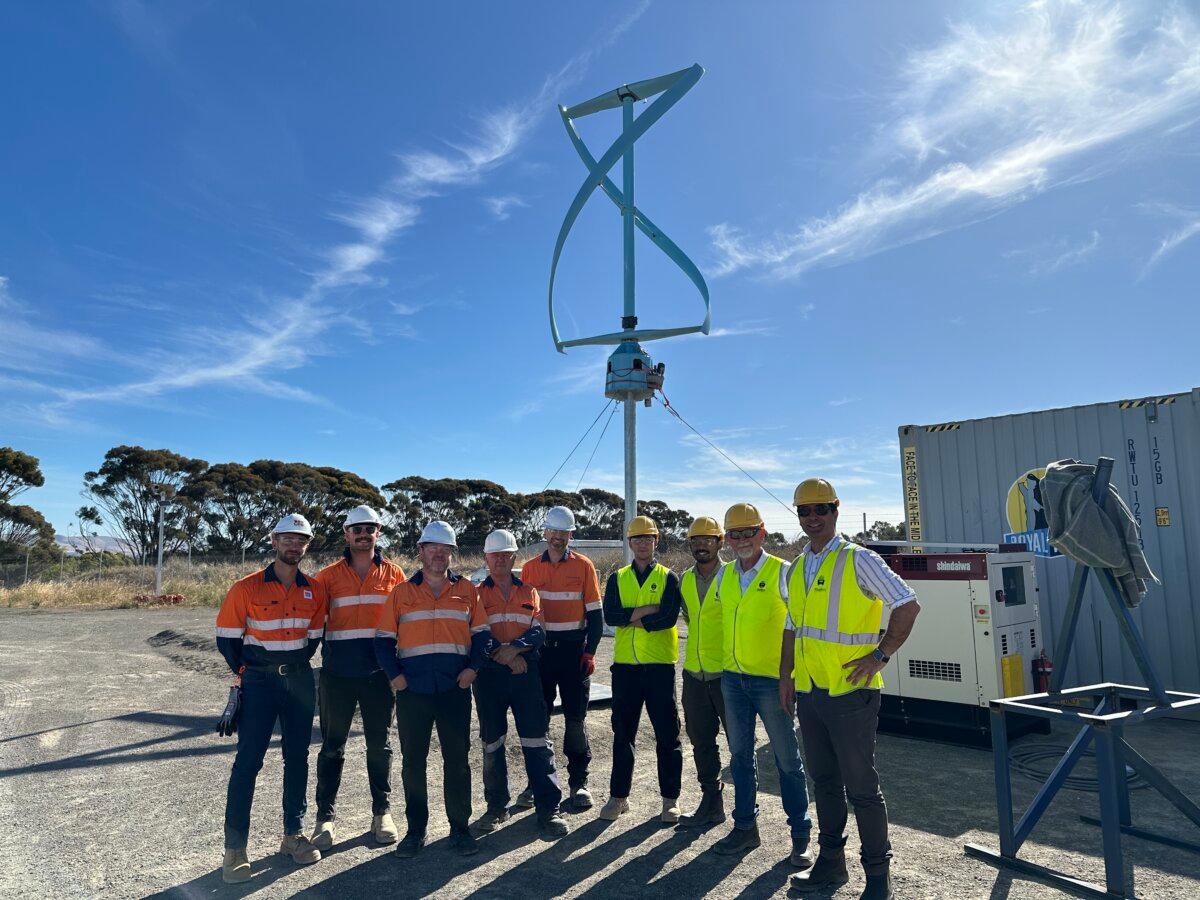A new “vertical axis” wind turbine (VAWT) that takes up less space than normal turbines—and is supposed to be safer for birdlife—could step in where regular turbines are proving impractical.
The turbine, shaped like a helix or DNA strain, is being developed by Flinders University and South Australian start-up VAWT-X Energy, and is set to undergo trials on the Fleurieu Peninsula, south of Adelaide.
The 6KW prototype, constructed at Flinders University’s Tonsley Innovation Precinct, has been funded through private equity and state and federal grants.
The current turbines being constructed en masse at wind farms around Australia take up a much larger footprint—one per football field—and are often located far away from towns and cities, meaning extensive transmission infrastructure is required.
They also require major construction work including concrete foundations that can weigh up to several hundred tons.
Meanwhile, a VAWT will require a much smaller footprint—current prototypes are five metres tall by three metres wide—and will be aimed at farms and small businesses, and built onsite.

“We believe our VAWTs are not only more efficient but also more accessible for applications like off-grid power and sustainable energy solutions for small businesses and farms,” said founder of VAWT-X Energy Gary Andrews, in a statement.
“The design of these new VAWT-X Energy turbines solves some of the traditional barriers for Darrieus designs.”
Andrews later told The Epoch Times that wildlife should be safer around the vertical axis design because it will be easier to detect.
“For regular turbines, the blade closer to the centre moves quite slowly, but the tip of the blade can move at speeds of 300 kilometres per hour,” Andrews said.
“That’s hard for birds to detect.”
Wind farms have been criticised for their impact on local wildlife, including the impact of noise on koala mating habits, as well as blades killing birds and batlife.
Meanwhile, the VAWT is also slated to take advantage of less ideal wind conditions.
However, current models produce energy at a slower rate than large turbines.
Wind Turbine Designs Still Being Refined
A study published in Nature Energy found that larger, taller, and more advanced wind turbines could significantly improve global wind energy efficiency.“What was surprising was the low impact of climate change on the wind resource compared to the projected technical development of wind turbines,” said lead author Christopher Jung of Albert-Ludwigs University of Freiburg.
The study predicts efficiency gains of up to 25 percent over the next decade due to improved turbine design.
Meanwhile, a study by Murdoch University researcher Amir Bashirzadeh Tabrizia identified inefficiencies in small and medium-sized wind turbine installations.
Using Computational Fluid Dynamics (CDF) modelling, Tabrizia found that turbines installed on rooftops often face turbulent, unstable, and weak wind flows, reducing their effectiveness.







